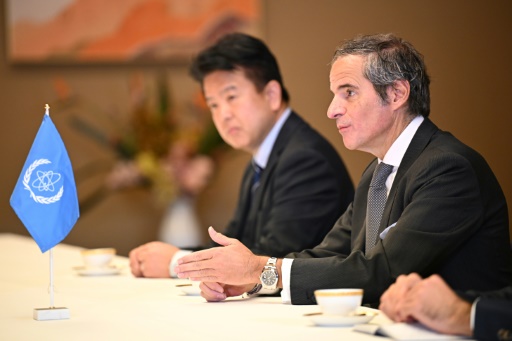IAEA chief visits Fukushima as Japan returns to nuclear power
The day after Tokyo approved an energy plan that reverts to nuclear power to meet the growing demand for artificial intelligence, the head of the U.N. nuclear watchdog paid a visit to Japan’s damaged Fukushima plant on Wednesday.
Japan’s efforts to decommission the Fukushima Daiichi plant are being watched by the International Atomic Energy Agency (IAEA) following the 2011 earthquake-caused tsunami that killed 18,000 people and caused the worst nuclear accident since Chernobyl.
Rafael Grossi, the head of the IAEA, arrived in Japan on Tuesday. The cabinet approved a plan to use more nuclear power to help meet the growing energy demand from microchip factories and artificial intelligence.
It is crucial that this be done in total safety and with the trust of the public at a time when Japan is gradually reintroducing nuclear energy into its national energy mix,” Grossi stated following his meeting with the foreign minister.
“Reduce reliance on nuclear power as much as possible” was a prior commitment made by Japan.
However, the most recent Strategic Energy Plan, which aims to make renewable energy the nation’s primary power source by 2040, omitted this commitment.
By 2040, nuclear will make up about 20 percent of Japan’s energy supply, up from 5.6 percent in 2022, according to the plan.
The nation is decommissioning Fukushima Daiichi, a process that is anticipated to take decades, and the return to nuclear comes as the most dangerous part still ahead: removing around 880 tons of radioactive debris from the reactors.
Grossi saw the enormous “interim” soil storage facilities close to the plant for the first time during his fifth trip to Fukushima.
To eliminate dangerous radiation, about 300,000 cubic meters of ash and 13 million cubic meters of soil from burned organic matter—enough to fill ten stadiums—were scraped from the area’s land.
On Wednesday, hundreds of large black bags filled with soil, some with a thin layer of snow on top, were stacked in various locations, and trucks and construction vehicles moved back and forth between them.
A sign showing the radiation level was hung on a locked fence surrounding the storage site.
About 75% of the soil, or the low-radioactivity portion, will be recycled by Japan for use in construction projects like road and railroad embankments.
The remaining material will be disposed of outside the Fukushima region ahead of a 2045 deadline.
Stripping topsoil was “very effective” to decontaminate land close to waterways, said Olivier Evrard, research director at France’s Atomic Energy Commission.
But the operation was expensive, “generated a massive amount of waste and still poses fertility issues” for agriculture, he told AFP.
It stands in contrast to the decision to fence off a large area after the 1986 Chernobyl disaster and more or less “leave it to wildlife”, Evrard said.
Experts from the IAEA and countries including China and South Korea will also take new seawater and fish samples from Fukushima on Wednesday.
Plant operator TEPCO began discharging 1.3 million tons of groundwater, seawater and rainwater, along with water used for cooling the reactors, into the sea in 2023.
The water release is endorsed by the IAEA and TEPCO says all radioactive elements have been filtered out except for tritium, levels of which are within safe limits.
However, countries including China and Russia have criticised the release and banned Japanese seafood imports.
China said in September it would “gradually resume” importing seafood from Japan but this has yet to begin.

